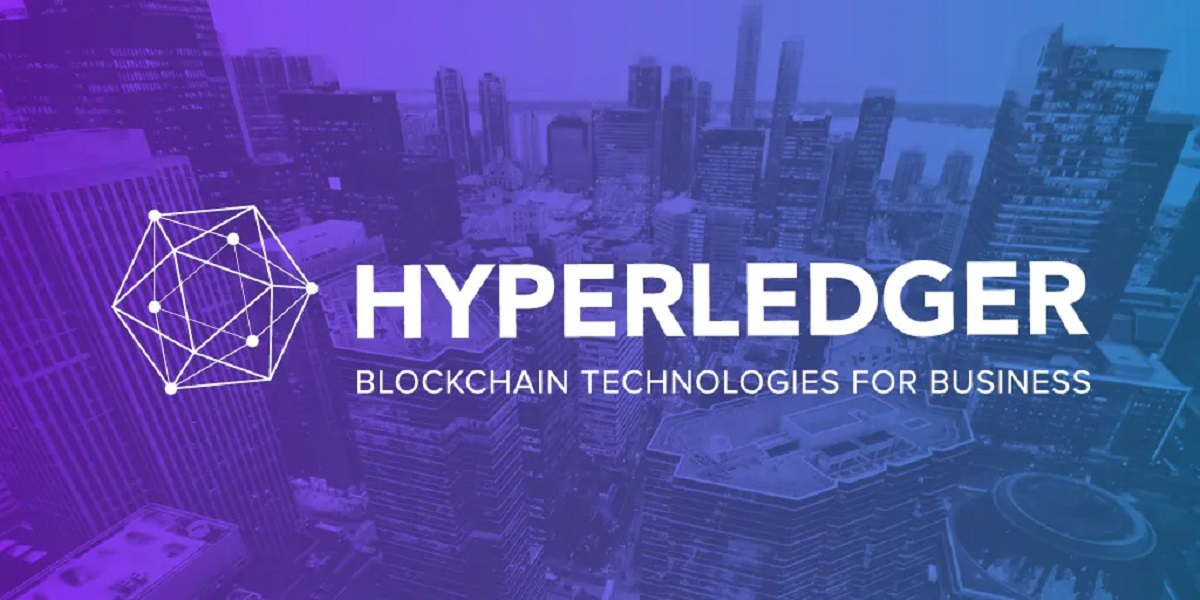Introduction
Welcome to the world of Hyperledger, a revolutionary technology that is transforming the way we think about blockchain. In this article, we will explore what Hyperledger is all about and why it is gaining so much attention in the blockchain industry.
Blockchain technology has gained immense popularity over the years due to its decentralized and secure nature. However, mainstream adoption of blockchain has been limited by challenges such as scalability, privacy, and interoperability. Hyperledger addresses these challenges by providing a robust framework for building enterprise-grade blockchain applications.
Developed by the Linux Foundation, Hyperledger is an open-source collaborative effort that brings together various industry leaders to create advanced blockchain technologies. It is not a single blockchain platform, but rather a collection of modular frameworks, tools, and libraries that can be used to build customized distributed ledgers.
The primary objective of Hyperledger is to provide a cross-industry platform that facilitates the development and deployment of scalable, secure, and interoperable blockchain solutions. It aims to foster collaboration and innovation by offering a common foundation for organizations to build their own blockchain-based applications.
Unlike public blockchains like Bitcoin and Ethereum, which are open to anyone for participation, Hyperledger focuses on permissioned blockchains. Permissioned blockchains restrict access to approved participants, ensuring that only trusted entities can validate transactions and maintain the integrity of the network.
By utilizing a permissioned model, Hyperledger addresses concerns regarding privacy, security, and regulatory compliance that are often associated with public blockchains. This makes it a preferred choice for enterprises looking to implement blockchain solutions in industries such as finance, healthcare, supply chain, and more.
One of the key advantages of Hyperledger is its modular architecture. It provides a range of frameworks, each with its own distinct features and functionalities, catering to different use cases and business requirements. The modular approach allows organizations to select and customize the framework that best suits their specific needs, enabling flexibility and adaptability in their blockchain implementations.
In the following sections, we will explore some of the popular frameworks within the Hyperledger ecosystem, including Hyperledger Fabric, Hyperledger Sawtooth, Hyperledger Iroha, Hyperledger Indy, and Hyperledger Besu. We will delve into their unique features, use cases, and benefits.
Overview of Hyperledger
Hyperledger is a cross-industry collaborative effort that aims to advance blockchain technology for enterprise applications. It provides a framework for building distributed ledger solutions that are scalable, secure, and interoperable.
The Linux Foundation hosts and oversees the development of Hyperledger, which is an open-source project that encourages collaboration among industry leaders, developers, and organizations. Unlike public blockchains like Bitcoin and Ethereum, which are designed for open participation, Hyperledger focuses on permissioned blockchains, where access is restricted to approved participants.
One of the key characteristics of Hyperledger is its modular architecture. It offers a collection of frameworks, tools, and libraries that developers can use to create their own blockchain solutions. This modular approach allows organizations to select the components that best suit their needs, enabling flexibility and customization in their deployments.
Hyperledger also provides a unified governance model that ensures transparency and fairness in decision-making. The governance structure allows stakeholders to have a voice in the development process, guiding the direction of Hyperledger projects.
One of the key frameworks within the Hyperledger ecosystem is Hyperledger Fabric. Fabric is a permissioned blockchain platform that provides a high degree of flexibility and scalability. It supports the execution of smart contracts and offers robust privacy features, making it suitable for a wide range of industries and use cases.
Hyperledger Sawtooth is another framework that focuses on scalability and modularity. It introduces a unique consensus algorithm called Proof of Elapsed Time (PoET), which optimizes energy consumption while maintaining the integrity of the network. Sawtooth is well-suited for applications that require high transaction throughput and dynamic consensus rules.
Hyperledger Iroha is designed to simplify the implementation of decentralized applications (DApps). It provides a concise set of libraries and a user-friendly interface, making it easier for developers to build blockchain-based solutions. Iroha is particularly well-suited for applications that involve asset management, identity, and access control.
Hyperledger Indy aims to address the challenges of digital identity management. It provides a decentralized identity system that ensures privacy, security, and interoperability. Indy enables individuals and organizations to have full control over their digital identities, granting them the ability to authenticate and exchange identity information securely.
Hyperledger Besu is an Ethereum-based framework that supports both public and private deployments. It offers compatibility with the Ethereum Virtual Machine (EVM) and provides a familiar development environment for Ethereum developers. Besu is suitable for organizations that want to leverage the Ethereum ecosystem while maintaining privacy and control over their blockchain networks.
By embracing a collaborative and modular approach, Hyperledger is driving innovation and adoption of blockchain technology in various industries. It provides a robust foundation for organizations to build customized blockchain solutions that meet their specific requirements, improving efficiency, transparency, and trust in business processes.
Hyperledger Architecture
The architecture of Hyperledger is designed to provide a flexible and modular framework for building enterprise-grade blockchain applications. It consists of several key components that work together to enable secure, scalable, and interoperable blockchain networks.
At the core of the Hyperledger architecture is the distributed ledger, which records and stores all the transactions within the network. Unlike traditional centralized databases, the ledger in Hyperledger is distributed across multiple nodes, ensuring transparency and immutability of the data.
The architecture also includes a consensus mechanism, which is responsible for reaching agreement on the validity and order of transactions. Consensus algorithms ensure that all participating nodes in the network maintain a consistent view of the ledger, preventing fraudulent or malicious activities.
Hyperledger provides a pluggable consensus model, allowing developers to choose the most appropriate algorithm for their specific use case. This flexibility enables organizations to balance factors such as performance, security, and energy efficiency based on their requirements.
Another crucial component of the Hyperledger architecture is the smart contract functionality. Smart contracts are self-executing contracts with predefined rules and conditions. They automate the execution of transactions, enforcing trust and removing the need for intermediaries.
Hyperledger supports different programming languages for writing smart contracts, including Go, Java, and JavaScript. This flexibility allows developers to use their preferred programming language and leverage their existing skills and tools.
Interoperability is a key focus of the Hyperledger architecture. Since Hyperledger is a modular framework, it allows for easy integration with existing legacy systems and other blockchain networks. This interoperability enables organizations to exchange data and assets seamlessly across different platforms.
Hyperledger also provides identity and access management (IAM) features, ensuring that only authorized entities can access the blockchain network. IAM controls the authentication and authorization of participants, preserving the privacy and security of the network.
The architecture is designed to be scalable, allowing blockchain networks built with Hyperledger to handle a large number of transactions efficiently. Hyperledger achieves scalability through techniques such as sharding, partitioning the network into smaller subsets of nodes that process transactions in parallel.
Security is paramount in the Hyperledger architecture. It includes features such as encryption, cryptographic algorithms, and access control mechanisms to protect the confidentiality and integrity of data on the blockchain network.
Overall, the architecture of Hyperledger is built to address the challenges faced by enterprises in adopting blockchain technology. It provides a flexible and modular framework that enables organizations to build robust, scalable, and interoperable blockchain solutions tailored to their specific requirements.
Hyperledger Fabric
Hyperledger Fabric is one of the most popular frameworks within the Hyperledger ecosystem. It is a permissioned blockchain platform that offers a highly versatile and scalable solution for building enterprise-grade blockchain applications.
One of the key features of Hyperledger Fabric is its modular architecture. It allows organizations to customize the components of the blockchain network to suit their specific needs. This flexibility enables the development of complex applications with different levels of privacy, performance, and consensus requirements.
Hyperledger Fabric provides a robust and efficient consensus mechanism called Practical Byzantine Fault Tolerance (PBFT). PBFT allows the network to reach consensus even if some of the nodes are compromised or fail, ensuring the integrity of the transactions. This fault-tolerant consensus algorithm is ideal for business-critical applications that require high levels of security and reliability.
Privacy and confidentiality are essential for enterprise blockchain solutions, and Hyperledger Fabric offers advanced privacy features. It allows for the creation of private channels, where a subset of participants can transact privately without revealing information to the entire network. This capability is particularly useful in industries that require sensitive data sharing, such as healthcare and finance.
Another significant advantage of Hyperledger Fabric is its support for smart contracts, known as chaincode. Chaincode is written in familiar programming languages such as Go, Java, and JavaScript, enabling developers to leverage their existing skills and easily integrate with existing systems. This ease of development and integration makes Hyperledger Fabric a preferred choice for enterprises looking to build blockchain applications.
The permissioned nature of Hyperledger Fabric also makes it suitable for regulatory compliance. Organizations can define access control policies, limiting participation to authorized entities, ensuring compliance with industry regulations. Additionally, Fabric provides robust identity and access management features, allowing each participant to have a unique and verifiable digital identity.
Scalability is another strength of Hyperledger Fabric. It enables the network to process a high volume of transactions through its modular and scalable architecture. Fabric supports parallel transaction execution and can handle thousands of transactions per second, making it suitable for applications that require high throughput.
Hyperledger Fabric has found use in various industries and use cases, including supply chain management, finance, healthcare, and identity management. Its flexible architecture, privacy features, scalability, and robust consensus mechanisms make it an ideal choice for enterprise blockchain solutions.
Overall, Hyperledger Fabric provides a powerful and adaptable framework for building secure, scalable, and privacy-enabled blockchain applications. Its modular nature, advanced consensus mechanisms, and support for smart contracts have contributed to its popularity among enterprises seeking innovative blockchain solutions.
Hyperledger Sawtooth
Hyperledger Sawtooth is a modular and scalable blockchain framework within the Hyperledger ecosystem. It is designed to address the challenges of scalability and flexibility while providing a robust and secure blockchain solution for enterprise applications.
One of the key features of Hyperledger Sawtooth is its unique consensus algorithm called Proof of Elapsed Time (PoET). Unlike traditional consensus algorithms that rely on computational power or stake-based voting, PoET leverages a combination of trusted execution environments and a lottery-based mechanism. This approach optimizes energy consumption and ensures fairness in reaching consensus among the participating nodes.
The modularity of Hyperledger Sawtooth enables organizations to design and customize their blockchain networks according to their specific needs. It supports the pluggable implementation of transaction processors, allowing developers to choose the most suitable approach for handling and validating transactions. This flexibility makes Sawtooth an ideal choice for applications that require dynamic consensus rules or upgradability.
Hyperledger Sawtooth also emphasizes scalability by employing a horizontal scaling approach. It allows for the creation of separate transaction processing nodes called “validators,” enabling the network to handle a high volume of transactions in parallel. This scalability feature makes Sawtooth suitable for applications requiring high-throughput and low-latency processing.
Another notable aspect of Hyperledger Sawtooth is its focus on data privacy. The framework provides support for both permissioned and permissionless blockchain networks, allowing organizations to choose the level of access control that aligns with their business requirements. Sawtooth also enables the creation of private transactions and data segregation, ensuring confidentiality within the network.
Sawtooth integrates well with existing enterprise systems and other blockchain networks. It supports the interoperability of smart contracts written in multiple programming languages using WebAssembly (WASM). This interoperability allows developers to reuse and integrate existing smart contract code and components, reducing development time and effort.
Hyperledger Sawtooth has been adopted in various industry domains, including supply chain management, healthcare, finance, and energy. Its innovative consensus algorithm, modularity, scalability, and privacy features make it suitable for use cases that require a flexible and secure blockchain solution.
In summary, Hyperledger Sawtooth offers a modular and scalable blockchain framework that provides organizations with the flexibility to build customized and secure blockchain applications. With its unique consensus algorithm, support for data privacy, interoperability, and scalability, Sawtooth offers a compelling solution for enterprises seeking to leverage blockchain technology for their business needs.
Hyperledger Iroha
Hyperledger Iroha is a blockchain framework within the Hyperledger ecosystem that aims to simplify the development and deployment of decentralized applications (DApps). Built with a focus on usability and user-friendly interfaces, Iroha provides developers with a concise set of libraries and tools to quickly build blockchain solutions.
One of the key features of Hyperledger Iroha is its simplicity. It offers a straightforward and intuitive application programming interface (API) that developers can use to interact with the blockchain network. This simplicity lowers the learning curve and allows developers to start building applications more rapidly, making Iroha suitable for both professional developers and those new to blockchain technology.
Hyperledger Iroha supports multi-signature accounts and role-based access control, providing robust identity and access management features. This allows organizations to define detailed permission structures, ensuring that only authorized participants can perform specific actions within the blockchain network. Privacy and security are thus preserved, making Iroha suitable for applications that involve sensitive data and strict access control requirements.
Another notable feature of Hyperledger Iroha is its support for various assets and digital identity management. It provides a unique asset model that allows for the definition and exchange of multiple types of assets within the blockchain network. Additionally, Iroha supports decentralized digital identity management, empowering individuals and organizations with full control over their digital identities while maintaining privacy and security.
Hyperledger Iroha is designed to be scalable and can handle a significant volume of transactions. It achieves scalability through a consensus algorithm based on the Byzantine Fault Tolerant (BFT) consensus protocol. This enables Iroha to deliver high throughput and low latency, making it suitable for applications that require fast and efficient transaction processing.
Iroha’s architecture enables easy integration with existing systems and other Hyperledger projects. It provides compatibility with the Hyperledger Indy project for advanced identity management and interoperability across different blockchain networks. This interoperability allows organizations to leverage the benefits of Iroha while integrating with other blockchain platforms within their ecosystem.
Hyperledger Iroha has found applications in several domains, including supply chain, finance, healthcare, and digital voting. Its simplicity, user-friendliness, support for multi-signature accounts, and digital identity management make it well-suited for building blockchain solutions that require ease of use and enhanced privacy.
To summarize, Hyperledger Iroha is a blockchain framework that simplifies the development and deployment of decentralized applications. With its focus on usability, identity management, scalability, and interoperability, Iroha offers a compelling solution for organizations seeking to leverage blockchain technology for their specific use cases.
Hyperledger Indy
Hyperledger Indy is a unique blockchain framework within the Hyperledger ecosystem that focuses on digital identity management. Developed specifically for decentralized identity solutions, Indy provides a robust and secure platform for individuals and organizations to manage their digital identities in a privacy-preserving and interoperable manner.
One of the key features of Hyperledger Indy is its emphasis on self-sovereign identity (SSI). SSI enables individuals to have full control and ownership over their digital identities. With Indy, users can store their identity information in a secure wallet and selectively share it with others, ensuring privacy and minimizing the risk of identity theft and misuse.
Hyperledger Indy supports the creation of decentralized identifiers (DIDs) and verifiable credentials. DIDs are globally unique identifiers that can be resolved to retrieve a person’s or organization’s public key. Verifiable credentials, on the other hand, are digitally signed pieces of information that attest to the authenticity of specific claims, such as academic degrees or professional certifications.
Interoperability is a crucial aspect of Hyperledger Indy’s design. It provides a common framework for digital identity that can be used across different platforms and organizations, enabling seamless integration and exchange of identity information. This interoperability ensures that identity systems built on Indy can communicate and verify identities, reducing redundancy and friction in identity management across diverse networks.
Hyperledger Indy lays a strong foundation for privacy and security. It employs advanced cryptographic techniques to ensure that only authorized entities can access and view identity information. It also supports zero-knowledge proofs, allowing users to prove certain attributes about themselves without revealing the underlying data, further enhancing privacy.
Hyperledger Indy’s architecture enables trust and confidence in digital identities. It utilizes distributed ledger technology to maintain a tamper-proof and auditable record of identity transactions and interactions. This immutability ensures transparency and enables auditing, crucial for regulatory compliance and accountability.
Applications of Hyperledger Indy span a wide range of use cases, including self-sovereign identity systems, digital wallets, healthcare data management, and Know Your Customer (KYC) processes in finance. Its focus on privacy, interoperability, and security make it well-suited for industries that require robust identity solutions and compliance with data protection regulations.
In summary, Hyperledger Indy provides a powerful blockchain framework specifically designed for decentralized identity management. With its emphasis on self-sovereign identity, interoperability, privacy, and security, Indy offers a reliable and scalable solution for organizations looking to build innovative and trusted identity systems.
Hyperledger Besu
Hyperledger Besu is an Ethereum-based blockchain framework within the Hyperledger ecosystem. It provides a robust infrastructure for building both public and private blockchain networks, offering enterprises the flexibility to leverage the Ethereum ecosystem while maintaining privacy and control over their networks.
One of the key features of Hyperledger Besu is its compatibility with the Ethereum Virtual Machine (EVM). Besu allows developers to use Ethereum-compatible smart contracts and decentralized applications (DApps), enabling seamless integration with existing Ethereum tools and infrastructure. This compatibility with the Ethereum ecosystem makes Besu a popular choice for organizations familiar with Ethereum development.
Besu supports both public and permissioned networks, making it suitable for various use cases. Public networks allow for open participation, while permissioned networks restrict access to trusted entities. This flexibility allows organizations to choose the network type that aligns with their specific requirements, whether it’s for public knowledge sharing, supply chain traceability, or private financial transactions.
Privacy is a critical consideration for many enterprise blockchain deployments, and Hyperledger Besu offers advanced privacy features. It supports private transactions and confidential contracts, allowing sensitive data to be shared securely among authorized participants within the network. Confidentiality is achieved through techniques such as zero-knowledge proofs and state encryption, ensuring that private information remains confidential, even within a decentralized network.
Hyperledger Besu is designed to be highly scalable and efficient. It implements the proof-of-work (PoW) consensus algorithm, enabling a high throughput of transactions. Besu also supports the use of consensus plugins, allowing organizations to integrate alternative consensus algorithms to suit their specific needs, such as proof-of-authority (PoA) or proof-of-stake (PoS).
Another significant advantage of Hyperledger Besu is its enterprise-friendly features. It provides robust identity and access management capabilities, allowing organizations to define and enforce access control policies within their networks. Besu also supports the integration of enterprise systems through its comprehensive APIs, enabling seamless integration with existing infrastructure, data sources, and business processes.
Various industries have adopted Hyperledger Besu for multiple use cases. It has been utilized in domains such as supply chain management, finance, digital asset trading, and decentralized finance (DeFi). Besu’s compatibility with the Ethereum ecosystem, privacy features, scalability, and enterprise-friendly capabilities make it well-suited for enterprises looking to build blockchain solutions.
In summary, Hyperledger Besu provides a powerful infrastructure for building Ethereum-compatible blockchain networks, whether they are public or private. With its compatibility, privacy features, scalability, and enterprise-friendly capabilities, Besu offers organizations the flexibility and control they need to implement secure and efficient blockchain solutions.
Use Cases of Hyperledger
Hyperledger has gained traction in various industries due to its ability to address specific challenges and offer innovative solutions. Let’s explore some notable use cases where Hyperledger is being leveraged:
Supply Chain Management: Hyperledger frameworks like Fabric and Sawtooth are being utilized to enhance transparency and traceability in supply chains. By leveraging blockchain technology, organizations can track and verify the movement of goods across the supply chain, reducing counterfeit products, improving efficiency, and ensuring ethical sourcing.
Healthcare: The healthcare industry is adopting Hyperledger for secure and interoperable health data management. Blockchain facilitates the secure sharing of patient records between healthcare providers, ensuring data privacy, reducing administrative errors, and enhancing patient care coordination. Hyperledger frameworks like Fabric and Indy are utilized to create decentralized and private health information networks.
Finance: Hyperledger frameworks have made significant contributions to the financial sector. They enable secure and efficient financial transactions, streamline payment processes, and facilitate cross-border remittances. Hyperledger projects like Fabric and Besu provide the foundation for blockchain-based solutions such as trade finance, supply chain finance, and digital asset management.
Gaming: Hyperledger frameworks offer solutions for enhancing transparency and trust in the gaming industry. By leveraging blockchain, game developers can create decentralized virtual economies, secure in-game asset ownership, and establish fair gameplay. Hyperledger projects such as Fabric and Iroha have been utilized to build blockchain-based gaming platforms and digital asset marketplaces.
Identity Management: Hyperledger Indy is specifically designed for digital identity management. It has applications in a range of industries, including healthcare, finance, and government, where secure and verifiable identity solutions are crucial. Hyperledger Indy enables individuals and organizations to maintain control over their digital identities and securely authenticate themselves in various transactions and interactions.
Energy: Hyperledger technology is being utilized in the energy sector for efficient and transparent management of energy transactions. By leveraging blockchain, energy market participants can securely trade energy, verify the origin of renewable energy sources, and track carbon emissions. Hyperledger frameworks like Fabric and Besu are utilized to create decentralized energy marketplaces and enable peer-to-peer energy trading.
Government: Governments are exploring the potential of Hyperledger for improved public services. Hyperledger frameworks provide a secure and transparent means of recording and managing government data, such as land registries, voting systems, and identity documents. They enable greater efficiency, transparency, and accountability in various government processes and services.
These are just a few examples of the diverse range of use cases where Hyperledger is making a significant impact. Hyperledger’s modular and flexible framework allows organizations across industries to customize and develop blockchain solutions tailored to their specific needs, driving innovation and transforming business processes.
Benefits of Hyperledger
Hyperledger offers several key benefits that make it an attractive choice for organizations looking to leverage blockchain technology. Let’s explore some of the advantages of using Hyperledger:
Privacy and Security: Hyperledger frameworks provide robust privacy and security features that are crucial for enterprise applications. Organizations can implement permissioned blockchains, controlling access to approved participants and securing sensitive data. Hyperledger incorporates advanced cryptographic techniques, ensuring the confidentiality and integrity of transactions and data on the blockchain network.
Interoperability: Hyperledger promotes interoperability, allowing seamless integration with existing systems and other blockchain networks. Its modular architecture enables organizations to select specific modules and components that align with their business needs. This interoperability facilitates the exchange of information and assets between different platforms, eliminating data silos and streamlining business processes.
Flexibility and Customization: Hyperledger offers a range of frameworks with different features and capabilities, providing flexibility in designing and customizing blockchain solutions. Organizations can select the most suitable framework based on their specific requirements, whether it’s Ethereum-compatible smart contracts using Besu or privacy-focused solutions with Fabric. This flexibility enables tailored solutions that meet the unique needs of various industries.
Scalability: Hyperledger frameworks address scalability concerns by employing innovative approaches. For instance, Hyperledger Sawtooth utilizes a horizontal scaling mechanism, allowing processing nodes to handle transactions in parallel. Hyperledger Fabric supports partitioning the network into private channels, ensuring scalability and performance while maintaining the privacy of transactions.
Trust and Transparency: Hyperledger facilitates trust and transparency with its distributed ledger technology. The decentralized nature of blockchain ensures that no single entity has complete control, promoting transparency in transactions and preventing fraud or tampering. The immutable nature of the ledger provides an auditable record of transactions, increasing trust among participants and enabling regulatory compliance.
Cost-Efficiency: By utilizing Hyperledger, organizations can reduce costs associated with intermediaries, reconciliation, and manual processes. Blockchain technology streamlines operations, automates transactions, and eliminates the need for third-party verification. It also reduces the risk of fraud and ensures accurate and efficient record-keeping, leading to significant cost savings in various business processes.
Innovation and Collaboration: Hyperledger fosters collaboration and innovation by bringing together industry leaders, developers, and organizations from various sectors. The open-source nature of Hyperledger encourages community contributions and facilitates knowledge sharing. Such collaboration leads to the development of new features, tools, and frameworks that continually advance the blockchain technology ecosystem.
Regulatory Compliance: Hyperledger frameworks offer features that aid compliance with industry regulations and data protection laws. Organizations can define access control policies, ensuring that only authorized entities can participate in the blockchain network. Hyperledger also enables the secure exchange of sensitive data while adhering to privacy regulations, providing a robust solution for industries with strict compliance requirements.
These benefits make Hyperledger an ideal choice for organizations seeking to leverage blockchain technology. Whether it’s enhancing privacy, improving efficiency, enabling secure transactions, or fostering collaboration, Hyperledger provides a solid foundation for building enterprise-grade blockchain solutions.
Conclusion
Hyperledger is revolutionizing the blockchain landscape by providing a flexible, secure, and interoperable framework for building enterprise-grade applications. The diverse range of Hyperledger frameworks, including Fabric, Sawtooth, Iroha, Indy, and Besu, cater to a wide array of industry use cases and requirements.
With its modular architecture, Hyperledger allows organizations to customize their blockchain networks, selecting the components and features that align with their specific needs. This flexibility enables tailored solutions that enhance privacy, scalability, and interoperability.
Hyperledger’s emphasis on privacy and security ensures that sensitive data remains confidential and transactions are secure. Its advanced cryptographic techniques, permissioned access, and identity management capabilities safeguard the integrity of the blockchain network, fostering trust among participants.
Interoperability is a key strength of Hyperledger, facilitating easy integration with existing systems and enabling seamless data and asset exchange between different platforms. This interoperability eliminates data silos, streamlines business processes, and enhances collaboration across industries.
Scalability is another significant advantage provided by Hyperledger. The framework’s innovative approaches, such as horizontal scaling and private channels, address scalability challenges and enable blockchain networks to handle a high volume of transactions efficiently.
Additionally, Hyperledger promotes cost savings by reducing the need for intermediaries, streamlining operations, and automating transactions. It enhances transparency and trust while complying with regulatory requirements, fostering innovation and collaboration within its open-source community.
In conclusion, Hyperledger is a game-changer in the blockchain world, empowering organizations to unlock the potential of decentralized applications and revolutionize business processes. Its modular architecture, privacy features, scalability, interoperability, and emphasis on security make it an ideal choice for enterprises across various industries seeking to leverage the benefits of blockchain technology.

























